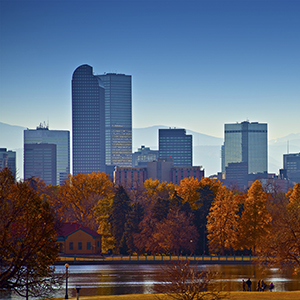Blog
Published: September 06, 2016
Colder Days are Coming - Now is the Time to Prepare
Even though the temperature is falling, your building and equipment will still be called upon to work hard in the coming months. And now is the time to look ahead to ensure your systems and equipment are up to the task...
Colder Days are Coming - Now is the Time to Prepare
September 06, 2016

(This article is part of the Roadmap 2 Summer Series. Click here to read last week’s article.)
The dog days of summer will soon be in your rear view mirror. Hopefully our Roadmap 2 Summer provided you with some useful tips and recommendations that helped you save energy and lower your utility bills during these high-demand months.
Even though the temperature is falling, your building and equipment will still be called upon to work hard in the coming months. And now is the time to look ahead to ensure your systems and equipment are up to the task.
Here are some simple ways to make sure your building continues to perform efficiently all year long.
Check it out
Don’t wait until the first snow fall to make sure your building’s heating systems are working properly. Check out those systems before you need to use them — now is the perfect time.
- Assess the equipment on your building’s plant side and make sure maintenance schedules are up to date.Change the filters to help improve equipment efficiency.
- Check the boiler and stroking valves to see the minimums set on their outside air intake.
- Check to see if there are reset schedules in place for the boiler to produce hot water when necessary to offset cold outside air temperatures during the winter. On milder days, the boilers won’t need to work as hard and can probably get by producing 150-degree water, rather than 180-degree water — saving energy and costs.
- Recheck your building envelope to confirm it is in good shape, and that windows and doors are closing and sealing properly.
- Determine if your building has any problem areas that consume staff time and energy. Once they have been identified look for the root cause and fix those issues.
Understand building changes
Similar to the summer, the way your building is used — and the hours it is occupied — may change this fall and winter. It’s important to monitor this using building and system data, to ensure that you are operating the equipment and systems in a way that matches how the building is being used. Remember to use automatic scheduling for building systems during the holidays, when your building will likely be unoccupied.
While utility demand charges are typically more severe in the summer months, you still have opportunities to reduce or shift demand during the fall and winter in ways that can help lower costs.
Knowing your utility billing dates is important as the seasons change. For example, If your billing cycle ends on Oct. 15, and Oct. 16 and 17 are very warm days, try to find ways to cool your building other than running the chiller for that brief window — which can cause an expensive spike in demand charges for the entire month.
Fall can be an especially challenging season because there might be a need for building heat during the cooler morning hours and building cooling during the warmer afternoon hours — sometimes in the same day. Be aware of these fluctuations and use your building controls to optimize performance and efficiency.
Use your economizer wisely
In many parts of the country, fall brings dry weather with low humidity, which is perfect for taking advantage of the economizer. Many buildings have break-even points that are 60 degrees Fahrenheit or even lower — the point at which the building starts using mechanical cooling.
In the fall, buildings can usually get by with using outside air to do most of the cooling. Make sure the economizer setpoints take advantage of the cool fall mornings, so outside air can be used to cool the building for the warmer afternoons. In many cases, the building can be pre-cooled with outside air to run a little cooler in the mornings, so the occupied setpoint during the day can slowly rise — without compromising occupant comfort.
Lock out the air-cooled side
Another way to help save energy and money as the temperatures drop is to lock out the equipment on your building’s air-cooled side. This equipment comes on based on outside air temperature, which means a November or December day in the 50s — even for a few hours — may results in building cooling systems automatically engaging.
Locking out air-cooled systems will prevent this from happening, which helps you avoid incurring cooling demand charges. If you encounter a warm fall or winter day when cooling is needed, you can always turn the system on for a short time.
Review your plans
Equipment breakdowns and weather-related outages can happen any time of year, so it’s important to have a contingency plan in place that addresses your needs in the fall and winter, as well. This detailed document should outline the processes and steps you can take to keep your building running in the event of an outage or emergency.
It’s also a good time to review any winter time service level agreements for your building, to make sure they are still appropriate for your needs and goals.
As you begin to look towards fall and winter, Trane building professionals are ready to help you assess your building performance, and find ways to capitalize on opportunities for improvement. Getting a better picture of how your building is performing — and what goals you want to achieve — is the first step toward improving efficiency.
With the right preparation — and help from Trane — you can optimize your building’s energy efficiency, occupant comfort and equipment performance all year long.
